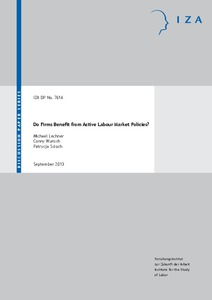Labor market institutions and the response of inflation to macro shocks in the EU: a two-sector analysis

D'Adamo, Gaetano ; Rovelli, Riccardo
Institute of Labor Economics, Bonn
IZA - Bonn
2013
39 p.
profitability ; training programme ; labour market policy ; employment subsidy
Discussion Paper
7614
Labour market
English
Bibliogr.
"We model empirically the role of labor market institutions in affecting the response of inflation to labor market and exchange rate shocks in the EU. We adopt a simple Phillips curve framework, treating separately the sectors producing traded and non-traded goods. Our results show that labor market institutions have a significant role in affecting cross-country differences in inflation adjustment for the "sheltered" (non-trading) sector; the effects in the "exposed" (trading) sector are also significant but more limited. Increased wage coordination and more expenditure on LM policies (active or total) flatten the Phillips curve in both sectors. More active LM policies also reduce the persistence of inflation. However, but only in the non-trading sector, this effect is more than offset (in 15 countries out of 21) by the presence of stronger wage coordination, which increases the persistence of inflation. Finally, the adjustment of inflation to the real exchange rate, i.e. the exchange rate pass-through, is largely unaffected by institutional variables; only for non-tradables there is a strong negative effect of increased union density."
Digital
The ETUI is co-funded by the European Union. Views and opinions expressed are however those of the author(s) only and do not necessarily reflect those of the European Union or the ETUI.